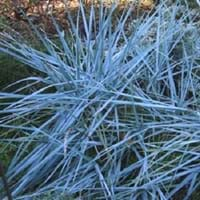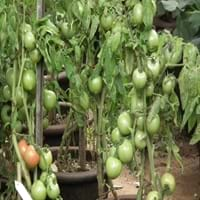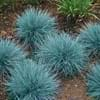Life Span
Perennial
Annual and Perennial
Origin
Europe, Western Asia
Mexico, Central America, South America
Types
Blue Dune Lyme Grass
Plum Tomato, Serbian Tomato, Stupice Tomato
Habitat
Clay soil areas, Loamy soils, Sandy areas, sandy seeps, Well Drained
Cultivated Beds
USDA Hardiness Zone
7-9
11-15
Sunset Zone
Not Available
A1, A2, A3, H1, H2, 1a, 1b, 2a, 2b, 3a, 3b, 4, 5, 6, 7, 8, 9, 10, 11, 12, 13, 14, 15, 16, 17, 18, 19, 20, 21, 22, 23, 24
Habit
Spreading
Vining/Climbing
Flower Color
Creamy Yellow
Yellow
Flower Color Modifier
Bicolor
Bicolor
Fruit Color
Not Available
Red, Rose, Coral
Leaf Color in Spring
Blue Green, Gray Green
Green, Dark Green
Leaf Color in Summer
Light Green
Green, Dark Green
Leaf Color in Fall
Blue Green, Gray Green
Green, Dark Green
Leaf Color in Winter
Tan
Green, Dark Green
Leaf Shape
Grass like
Bell Shaped
Plant Season
Summer, Fall, Winter
Spring, Summer, Fall
Sunlight
Full Sun, Partial Sun, Partial shade
Full Sun
Type of Soil
Clay, Loam, Sand
Loam, Sand
The pH of Soil
Acidic, Neutral, Alkaline
Neutral
Soil Drainage
Well drained
Well drained
Bloom Time
Early Summer, Summer
Indeterminate
Tolerances
Wet Site, Pollution, Drought, Soil Compaction
Drought
Where to Plant?
Container, Ground, Pot
Container, Ground, Pot
How to Plant?
Root Division, Rooted stem cutting, Seedlings
Seedlings, Transplanting
Plant Maintenance
Medium
Medium
Watering Requirements
Average Water Needs, occasional watering once established
Average Water Needs
In Summer
Lots of watering
Lots of watering
In Spring
Moderate
Moderate
In Winter
Average Water
Average Water
Soil pH
Acidic, Neutral, Alkaline
Neutral
Soil Type
Clay, Loam, Sand
Loam, Sand
Soil Drainage Capacity
Well drained
Well drained
Sun Exposure
Full Sun, Partial Sun, Partial shade
Full Sun
Pruning
No pruning needed in the early stages, Prune grass to maintain level
Cut or pinch the stems, Pinch Tips, Prune for shortening long shoots, Remove damaged leaves, Remove dead branches, Remove dead leaves, Remove short twigs, Remove tight V-branching crotches
Fertilizers
All-Purpose Liquid Fertilizer, fertilize in spring
Apply 5-10-5 amounts
Pests and Diseases
Red blotch
Red blotch
Plant Tolerance
Drought, Pollution, Soil Compaction, Wet Site
Drought
Flowers
Insignificant
Yes
Flower Petal Number
Single
Single
Fragrant Bark/Stem
No
Yes
Foliage Texture
Coarse
Medium
Foliage Sheen
Matte
Matte
Attracts
Butterflies
Butterflies
Allergy
Pollen
Abdominal pain, Dermatitis, Oral Allergy, Rhinitis, Urticaria
Aesthetic Uses
Ground Cover, Landscape Designing
Not Used For Aesthetic Purpose
Beauty Benefits
Not Available
Good for skin
Edible Uses
Insignificant
Yes
Environmental Uses
Air purification, soil erosion prevension on hill slopes, soil stabilisation
Air purification, Food for animals, Food for birds, Food for insects
Medicinal Uses
Not Available
Antirheumatic, Cardiac, Homeopathy, Odontalgic
Part of Plant Used
Stem
Fruits, Seeds
Other Uses
Used as Ornamental plant
Cosmetics, For making oil, Repellent, Used as an insecticide
Used As Indoor Plant
No
Yes
Used As Outdoor Plant
Yes
Yes
Garden Design
Dried Flower/Everlasting, Groundcover
Container, Edible, Herb, Vegetable, Vine
Botanical Name
ELYMUS glaucus
LYCOPERSICON esculentum 'Soldacki'
Common Name
Blue Lyme Grass, Blue Wildrye
Tomato
In Hindi
Blue Lyme Grass
बीफस्टीक टमाटर
पौधा
In German
Blau Lyme Grass
Beefsteaktomate
Pflanze
In French
Bleu Lyme Herbe
tomate beefsteak
Plante
In Spanish
Azul hierba de Lyme
Bistec de tomate
Planta
In Greek
Μπλε Lyme Grass
μπριζόλα Ντομάτα
Φυτό
In Portuguese
Azul Lyme grama
tomate Redondo Vermelho
Plantar
In Polish
Niebieska Trawa Lyme
befsztyk pomidorowy
Roślina
In Latin
Blue Lyme Grass
Nullam beefsteak
planta
Phylum
Magnoliophyta
Magnoliophyta
Class
Liliopsida
Magnoliopsida
Order
Cyperales
Solanales
Family
Poaceae
Solanaceae
Clade
Angiosperms, Commelinids, Monocots
Angiosperms, Asterids, Eudicots
Tribe
Triticeae
Not Available
Subfamily
Pooideae
Not Available
Number of Species
Not Available
Importance of Blue Lyme Grass and Beefsteak Tomato
Want to have the most appropriate plant for your garden? You might want to know the importance of Blue Lyme Grass and Beefsteak Tomato. Basically, these two plants vary in many aspects. Compare Blue Lyme Grass and Beefsteak Tomato as they differ in many characteristics such as their life, care, benefits, facts, etc. Every gardener must at least have the slightest clue about the plants he wants to plant in his garden. Compare their benefits, which differ in many ways like facts and uses. The medicinal use of Blue Lyme Grass is Not Available whereas of Beefsteak Tomato is Antirheumatic, Cardiac, Homeopathy and Odontalgic. Blue Lyme Grass has beauty benefits as follows: Not Available while Beefsteak Tomato has beauty benefits as follows: Not Available.
Compare Facts of Blue Lyme Grass vs Beefsteak Tomato
How to choose the best garden plant for your garden depending upon its facts? Here garden plant comparison will help you to solve this query. Compare the facts of Blue Lyme Grass vs Beefsteak Tomato and know which one to choose. As garden plants have benefits and other uses, allergy is also a major drawback of plants for some people. Allergic reactions of Blue Lyme Grass are Pollen whereas of Beefsteak Tomato have Abdominal pain, Dermatitis, Oral Allergy, Rhinitis and Urticaria respectively. Having a fruit bearing plant in your garden can be a plus point of your garden. Blue Lyme Grass has no showy fruits and Beefsteak Tomato has showy fruits. Also Blue Lyme Grass is not flowering and Beefsteak Tomato is flowering. You can compare Blue Lyme Grass and Beefsteak Tomato facts and facts of other plants too.





